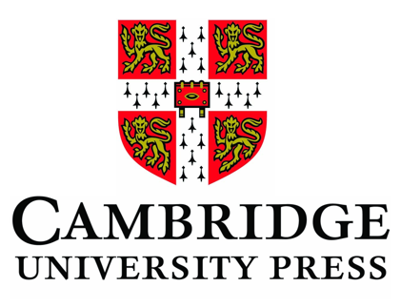Location
Cambridge University Press is part of the University of Cambridge. Our mission is to unlock people’s potential with the best learning and research solutions. Our vision is a world of learning and research inspired by Cambridge.
Our peer-reviewed publishing lists comprise over 53,000 titles covering academic research, professional development, over 350 research journals, school-level education, English language teaching and Bible publishing. This list is growing every year and spans subjects from aesthetics through to zoology, with authors ranging from Shakespeare to English language teaching author, Ray Murphy.
A pioneer in our field, we are committed to supporting innovation in learning and teaching. We publish without boundaries, ensuring our resources are accessible across the globe, in print, online and other digital formats.
We take pride in supporting community programmes across the globe. Staff are encouraged to offer practical help, advice and funding to nurture vital charitable, educational and voluntary partnerships.
Playing a leading role in today's global market place, we have over 50 offices around the globe, and distribute our products to nearly every country in the world. We publish 50,000 authors based in over 100 different countries.
Members:
Resources
Displaying 21 - 25 of 81Rights to trade for species conservation: exploring the issue of the radiated tortoise in Madagascar
In many developing countries, people rely on natural resources for subsistence and cash income. The trade ban on species listed as critically endangered by the International Union for the Conservation of Nature (IUCN) Red List may be counter-productive, as increasing the rarity and thus price of these species acts as a stimulus to illegal markets rather than a deterrent. Since illegal markets cannot have legal property rights, there is no basis for any form of sustainable harvesting based on property rights.
Potential habitat corridors and restoration areas for the black-and-white snub-nosed monkey Rhinopithecus bieti in Yunnan, China
The black-and-white snub-nosed monkey Rhinopithecus bieti is endemic to China, where its population is fragmented into 15 isolated groups and threatened despite efforts to protect the species. Here we analyse possible habitat connectivity between the groups reported in Yunnan, using genetic, least-cost path and Euclidean distances. We detect genetic isolation between the northern and southern groups but not among the northern groups. We show that genetic distance is better explained by human disturbance and land-cover least-cost paths than by Euclidian distance.
Have tropical deforestation's changing dynamics created conservation opportunities? A historical analysis
During the past century, humans converted extensive areas of tropical forest into cultivated lands. Three distinct processes, each predominant during a different historical period, have driven the destruction of the forests. This review describes each of these deforestation dynamics: natural resource degrading poverty traps that predominated during the colonial era, new land settlement schemes that prevailed for two decades after decolonization, and finally, financialized, large enterprise dynamics that have predominated during the past quarter century.
Collateral benefits from public and private conservation lands: a comparison of ecosystem service capacities
Protected areas remain the most commonly used tool for in situ conservation; however growth in the USA's system of public lands has stagnated while private land conservation continues to expand. Easements can provide a range of ecosystem services (ESs), but it is unknown whether conservation easements maintain ES capacities equivalent to public protected areas.
Contrasting effects of pine plantations on two skinks: results from a large‐scale ‘natural experiment’ in Australia
The conversion of agricultural land to forest plantations is a major driver of global land‐use change, and considering that large portions of the planet are covered by forest plantations, understanding their impact on biodiversity is a research priority. The aim of our study was to quantify the long‐term response of two lizard species to the transformation of the matrix surrounding remnant habitat patches (from agricultural land to pine plantations).


